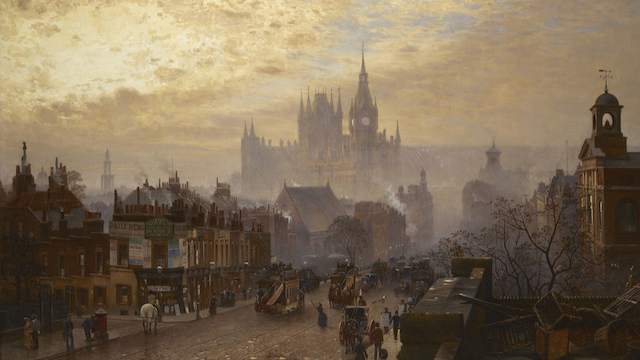The Sherlockian and Watsonian world received many gifts from a man born on this day in 1884. Already a Business Law Professor at the University of Chicago with several books and articles to his credit, he discovered the joy of playing The Game after reading Profile by Gaslight in 1944. He wrote a 16-page response to Anthony Boucher’s essay, “Was the Later Holmes an Imposter?”
He soon became acquainted with Vincent Starrett, who invited him to join the Hounds of the Baskerville (sic), which Starrett himself founded in 1943.
Among our Mystery Man’s Sherlockian publications were An Irregular Chronology of Sherlock Holmes of Baker Street (1947) and An Irregular Guide to Sherlock Holmes of Baker Street (1947, with supplements in 1947 and 1948).
It was the latter volume that introduced his most enduring and outstanding gift, one that almost every Sherlockian writing on the Canon uses nearly every day around the world. We use it whenever we post quotes or events from the Canon. It is an obvious convenience to use this rather than spelling out “The Hound of the Baskervilles” every time we refer to that book. It is, of course, Jay Finley Christ’s system of abbreviations of all 60 Canonical tales:

ABBE The Abbey Grange
BERY The Beryl Coronet
BLAC Black Peter
BLAN The Blanched Soldier
BLUE The Blue Carbuncle
BOSC The Boscombe Valley Mystery
BRUC The Bruce-Partington Plans
CARD The Cardboard Box
CHAS Charles Augustus Milverton
COPP The Copper Beeches
CREE The Creeping Man
CROO The Crooked Man
DANC The Dancing Men
DEVI The Devil’s Foot
DYIN The Dying Detective
EMPT The Empty House
ENGR The Engineer’s Thumb
FINA The Final Problem
FIVE The Five Orange Pips
GLOR The “Gloria Scott”
GOLD The Golden Pince-Nez
GREE The Greek Interpreter
HOUN The Hound of the Baskervilles
IDEN A Case of Identity
ILLU The Illustrious Client
LADY The Disappearance of Lady Frances Carfax
LAST His Last Bow
LION The Lion’s Mane
MAZA The Mazarin Stone
MISS The Missing Three-Quarter
MUSG The Musgrave Ritual
 NAVA The Naval Treaty
NAVA The Naval Treaty
NOBL The Noble Bachelor
NORW The Norwood Builder
PRIO The Priory School
REDC The Red Circle
REDH The Red-Headed League
REIG The Reigate Squires
RESI The Resident Patient
RETI The Retired Colourman
SCAN A Scandal in Bohemia
SECO The Second Stain
SHOS Shoscombe Old Place
SIGN The Sign of the Four
SILV Silver Blaze
SIXN The Six Napoleons
SOLI The Solitary Cyclist
SPEC The Speckled Band
STOC The Stockbroker’s Clerk
STUD A Study in Scarlet
SUSS The Sussex Vampire
THOR The Problem of Thor Bridge
3GAB The Three Gables
3GAR The Three Garridebs
3STU The Three Students
TWIS The Man with the Twisted Lip
VALL The Valley of Fear
VEIL The Veiled Lodger
WIST Wisteria Lodge
YELL The Yellow Face
Our thanks to A Curious Collection of Dates: Through the Year with Sherlock Holmes, by Leah Guinn (JHWS “Amber”) and Jaime N Mahoney (JHWS “Tressa”) for including Professor Christ’s birthday (and the note that his surname rhymes with “list”) among many other fascinating tid bits!




 On July 8, 1837, Mary Josephine Foley was born. She grew up with a strong role model in her mother, Catherine Pack Foley, who supported her young family after being widowed when Mary was three. Catherine taught in Ireland and in Edinburgh, where she also opened a governess placement service. [Shades of Miss Violet Hunter in COPP –Chips]
On July 8, 1837, Mary Josephine Foley was born. She grew up with a strong role model in her mother, Catherine Pack Foley, who supported her young family after being widowed when Mary was three. Catherine taught in Ireland and in Edinburgh, where she also opened a governess placement service. [Shades of Miss Violet Hunter in COPP –Chips]
 Sir Henry Duncan Littlejohn was born May 8, 1826 in Edinburgh.
Sir Henry Duncan Littlejohn was born May 8, 1826 in Edinburgh.










